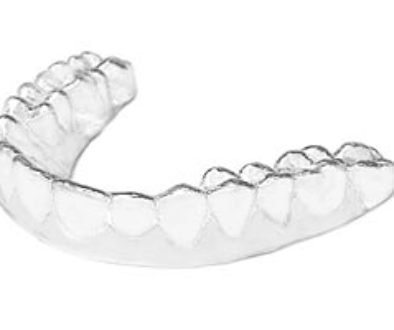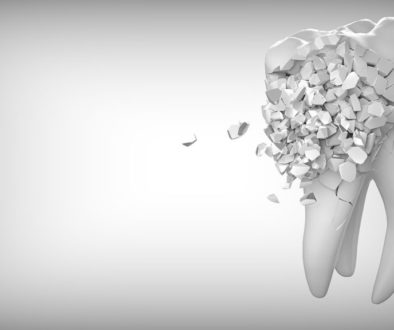Causes of Tooth Discoloration
Fluorosis (Brown)
When children are exposed to higher level of fluoride than recommended, the developing permanent teeth tend to take on a mottled brown appearance. This can range from very mild staining to very heavy depending on how high the levels of fluoride were. Excess fluoride can come from natural water sources (certain areas have naturally high levels of fluoride) or from swallowing too much toothpaste as a child. This is an example of a pretty mild case.

Tetracycline staining (Gray)
Tetracycline staining occurs in permanent teeth as a result of certain antibiotics taken while the teeth were forming (most commonly tetracycline). It usually shows up as extremely dark staining on the permanent teeth oftentimes in horizontal lines. This used to be a pretty common occurrence, before the effects of tetracycline antibiotics on teeth were really known. Today, doctors generally don’t prescribe antibiotics that can cause permanent tooth discoloration. Treating tetracycline stained teeth can be challenging. The first option for treatment is the KOR Deep Bleaching System. This can only be done at a dentist’s office. It is the only whitening system that has proven effective at whitening tetracycline stained teeth. The second option is veneers to cover the stained teeth. Usually the dentist will need to remove about a 1/2 millimeter of tooth structure in order to make enough space for the veneers to block out the color from the tooth underneath.

Enamel hypoplasia (Brown)
Certain types of illnesses and high fevers during childhood can cause the permanent teeth to develop incorrectly. This can range from small isolated brown spots on the teeth to large, soft areas when the teeth come in. Sometimes treatment is needed but only your dentist can make this determination. If you do notice a permanent tooth that comes in not looking quite right, have it checked out as soon as you are able.

Trauma (Gray)
Trauma to a tooth, usually as a result of hard blow to the mouth or a fall, can cause several different things to happen. The most typical pattern is a graying of the tooth. This grayness is comparable to a bruise somewhere else on your body. With teeth, the bruising spreads into the underlying tooth structure and doesn’t go away with time. Some of these teeth will end up needing a root canal while others will be just fine. If you do end up getting a root canal, internal bleaching will sometimes be done to whiten the tooth. Without a root canal, the only option is to put a veneer or crown on the tooth.

Internal resorption (Pink)
Internal resorption is when the cells inside a tooth start to dissolve it from the inside out. This is often a result of trauma but sometimes can happen without any apparent cause. When the resorption has progressed significantly, the tooth will oftentimes turn pink. This is known as a pink tooth of mummery. A root canal done by an endodontist is usually the only option at this point. Sometimes teeth with internal resorption aren’t able to be saved, depending on how far it has progressed.

Baby teeth ready to come out (Pink)
Right before a baby tooth is ready to come out, sometimes it will turn pink. The remaining tooth has become very thin and you’re seeing the gum tissue through the tooth. No need to do anything here other than wait for the baby tooth to come out.

Decalcification (Chalky White)
Decalcification of the enamel of a tooth is the first step in a cavity forming. This shows up as a chalky whitish discoloration, usually right along the gumline but can also appear elsewhere. A lot of teenagers end up with these white areas around where the brackets for their braces were. It is almost always a result of excessive consumption of sugary and/or acidic drinks. If it progresses it will turn into a cavity. With a change in diet and better oral hygiene habits, the area can be remineralized and no treatment will be needed.

Cavities (Brown or Black)
Outright cavities on teeth are usually a brown or black color. They start off as areas of white decalcification, progress to light brown areas, and finally progress to a dark brown or black color. Occasionally, the outer layer of the tooth will stay intact and the cavity will continue to spread underneath. This shows up as a gray looking shadow. The only option in these cases is to have the cavities removed by a dentist and filled with a tooth colored material.

There are several other rare conditions that can cause changes in the color of the teeth. These include hyberbilirubinemia, osteogenesis imperfecta, and dentinogenesis imperfecta. These are pretty unusual and you’d likely have other health issues involved with them.



